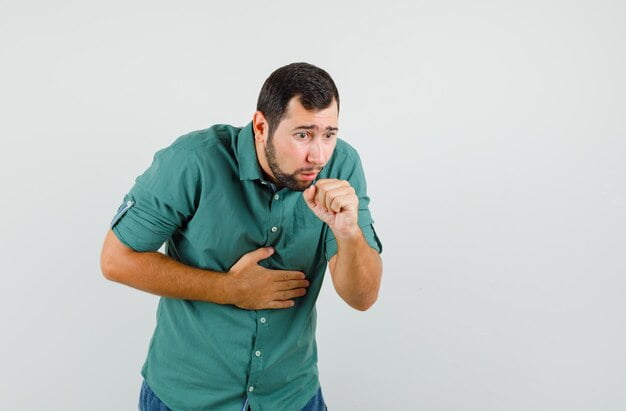In a world where advances in medicine are constantly changing our knowledge of illnesses, tuberculosis (TB) is a powerful foe. This age-old illness has afflicted people for generations, resulting in misery and the loss of many lives. Even so, a lot of people still have misconceptions and questions about TB. Every aspect of tuberculosis will be covered in detail in this extensive reference, including its definition, symptoms, history, transmission, and more. So let us set out on a mission to expose the myths surrounding TB and arm ourselves with information to fight this ongoing threat.
I. Tuberculosis Definition
The infectious bacterial disease known as tuberculosis, or TB, mostly affects the lungs but can also spread to other areas of the body. Before becoming active and generating symptoms, Mycobacterium, the bacteria that causes TB, can lie dormant in the body for years. With millions of new cases reported each year, TB presents a serious threat to world health.
II. Tuberculosis Vaccine
One of the most effective methods of preventing TB is through vaccination. The Bacillus Calmette-Guérin (BCG) vaccine, developed in the early 20th century, is widely used to immunize against TB, particularly in regions where the disease is dominant. While the BCG vaccine isn’t 100% effective, it significantly reduces the risk of simple forms of TB in children.
III. Tuberculosis Treatment
Usually, a course of antibiotics given over several months is required to treat tuberculosis. The most often prescribed drugs for (TB) include pyrazinamide, ethambutol, rifampin, and isoniazid. In order to guarantee that the germs are completely destroyed and to stop the emergence of drug-resistant strains, patients must stick to the prescribed course of therapy in its entirety.
IV. Tuberculosis Test
A TB skin test or a blood test to find the bacteria present are frequently used to diagnose tuberculosis. Further diagnostic procedures, including as sputum testing and chest X-rays, may be carried out to confirm the diagnosis and determine the severity of the infection if these initial tests show exposure to TB.
V. Tuberculosis Causes
That is caused by the Mycobacterium tuberculosis bacteria, which can spread through the air when an infected individual coughs, sneezes, or speaks. Close and prolonged contact with an infected person increases the risk of transmission. Factors such as weakened immune systems due to conditions like HIV/AIDS, malnutrition, or certain medications can also elevate the susceptibility to TB infection.
VI. Tuberculosis Contagious
Yes, it is contagious, but not everyone infected with the bacteria becomes sick or contagious. Individuals with latent TB infection have the bacteria in their bodies but do not exhibit symptoms or spread the disease. However, those with active TB disease can transmit the infection to others through respiratory droplets.
VII. Tuberculosis Test Near Me
You must get medical help right away if you think you may have contracted tuberculosis or if you show symptoms like a constant cough, fever, exhaustion, or weight loss. Public health institutions, clinics, and healthcare facilities frequently perform TB testing and can offer advice on choices for additional assessment and treatment.
VIII. Tuberculosis Doctor
It is necessary to see a medical specialist for an accurate diagnosis and treatment of infectious diseases, including TB. Pulmonologists, infectious disease experts, and general practitioners are able to evaluate symptoms, request diagnostic testing, and create individualized treatment regimens based on each patient’s need.
IX. Tuberculosis Symptoms
Its symptoms can vary depending on whether the infection is latent or active and which parts of the body are affected. Common symptoms of active TB disease include:
- Persistent cough lasting more than three weeks
- Chest pain
- Coughing up blood or sputum
- Fatigue
- Fever and chills
- Night sweats
- Loss of appetite
- Unintended weight loss
X. Tuberculosis Precautions
Preventing TB involves a combination of vaccination, infection control measures, and awareness. Here are some precautions to reduce the risk of TB transmission:
- Get vaccinated with the BCG vaccine, particularly if you live in or travel to areas where TB is predominant.
- Practice good respiratory hygiene by covering your mouth and nose when coughing or sneezing.
- Avoid close contact with individuals known to have active TB disease.
- Maintain a healthy lifestyle to bolster your immune system and reduce susceptibility to TB infection.
XI. Tuberculosis Transmission
As already mentioned, the main way that tuberculosis spreads is through the air, which occurs when an infected person coughs, sneezes, or speaks. Prolonged and close contact with an infected individual raises the risk of transmission. Additionally, conditions that are poorly ventilated or crowded help in the transmission of TB bacteria.
XII. Tuberculosis History
A constant presence throughout human history, it has been termed the “White Plague” and the “Captain of All These Men of Death.” TB has sparked terror, poetry, and medical advancements over the ages. The history of TB connects with the tale of humanity’s battle against infectious diseases, from the mummies of ancient Egypt that displayed symptoms of the illness to the hospitals of the 19th century..
XIII. Tuberculosis Skin Test
The tuberculin skin test, also known as the Mantoux test, is a common method used to screen for tuberculosis infection. A tiny amount of tuberculin pure protein derivative (PPD) is injected under the skin, usually on the forearm, during the test. Next, the area is checked for a reaction; if it does, a raised, red mark indicates a successful outcome.
XIV. Tuberculosis Bacteria
The bacteria that causes TB, Mycobacterium tuberculosis, is a hardy microbe that will survive bad environments and get past the body’s defenses against infection. It is deadly and persistent in the host due to the specific makeup of its cell wall and its capacity to produce tumors.
Summary
Tuberculosis remains a significant global health concern, but with knowledge, awareness, and access to appropriate healthcare, we can work towards its control and ultimate eradication. Understanding the causes, symptoms, transmission, and prevention measures is necessary for both individuals and communities to combat this ancient yet persistent disease. By staying informed and taking proactive steps, we can contribute to the collective effort to minimize the impact of tuberculosis on society. Let’s continue to strive for a world free from the burden of TB.
Recommendations
Sure, here’s a table outlining dietary guidelines for a tuberculosis patient:
| Diet | Recommendations |
|---|---|
| Calories | Adequate calorie intake is essential to support the body’s energy needs and aid in recovery. Aim for a balanced diet. |
| Protein | High-protein foods such as lean meats, fish, poultry, eggs, dairy, legumes, nuts, and seeds are important. |
| Fruits and Vegetables | Consume a variety of colorful fruits and vegetables rich in vitamins and antioxidants to support immune function. |
| Whole Grains | Opt for whole grains like brown rice, whole wheat bread, oats, quinoa, and barley for sustained energy and fiber. |
| Healthy Fats | Include sources of healthy fats such as avocados, olive oil, nuts, seeds, and fatty fish to support overall health. |
| Fluids | Drink plenty of fluids, especially water, to stay hydrated and help flush out toxins from the body. |
| Vitamin D | Consider supplementation if deficient, or consume fortified foods like dairy products, fortified cereals, and fish. |
| Zinc | Consume zinc-rich foods like lean meats, shellfish, legumes, nuts, seeds, dairy, and whole grains. |
| Iron | Incorporate iron-rich foods such as lean meats, poultry, fish, beans, lentils, spinach, and fortified cereals. |
| Vitamin C | Include foods high in vitamin C such as citrus fruits, strawberries, kiwi, bell peppers, and tomatoes. |
| Small, Frequent Meals | Eat smaller, more frequent meals to avoid feeling too full and to aid digestion, especially if appetite is poor. |
Note: It’s important for tuberculosis patients to consult with healthcare professionals or dietitians for personalized dietary recommendations tailored to their specific needs and health status.
1. Can tuberculosis be cured?
Yes, it can be cured with proper treatment, typically involving a combination of antibiotics taken over several months.
2. How tuberculosis affects the body?
Tuberculosis primarily affects the lungs but can also affect other parts of the body. It spreads through the air when an infected person coughs or sneezes, and the bacteria can cause symptoms such as coughing, chest pain, weight loss, and fatigue.
3. Which tuberculosis is dangerous?
Drug-resistant tuberculosis, particularly multidrug-resistant (MDR-TB) and extensively drug-resistant (XDR-TB) strains, are considered more dangerous because they are harder to treat with standard medications.
4. Why tuberculosis treatment is long?
It treatment is long because the bacteria that cause it are slow-growing and can become resistant to antibiotics if not properly treated over an extended period. Completing the full course of treatment is essential to prevent recurrence and the development of drug resistance.
5. What is the first sign of tuberculosis?
The first sign of tuberculosis is often a persistent cough that lasts for more than two weeks, accompanied by other symptoms such as coughing up blood, chest pain, fatigue, fever, night sweats, and weight loss.



